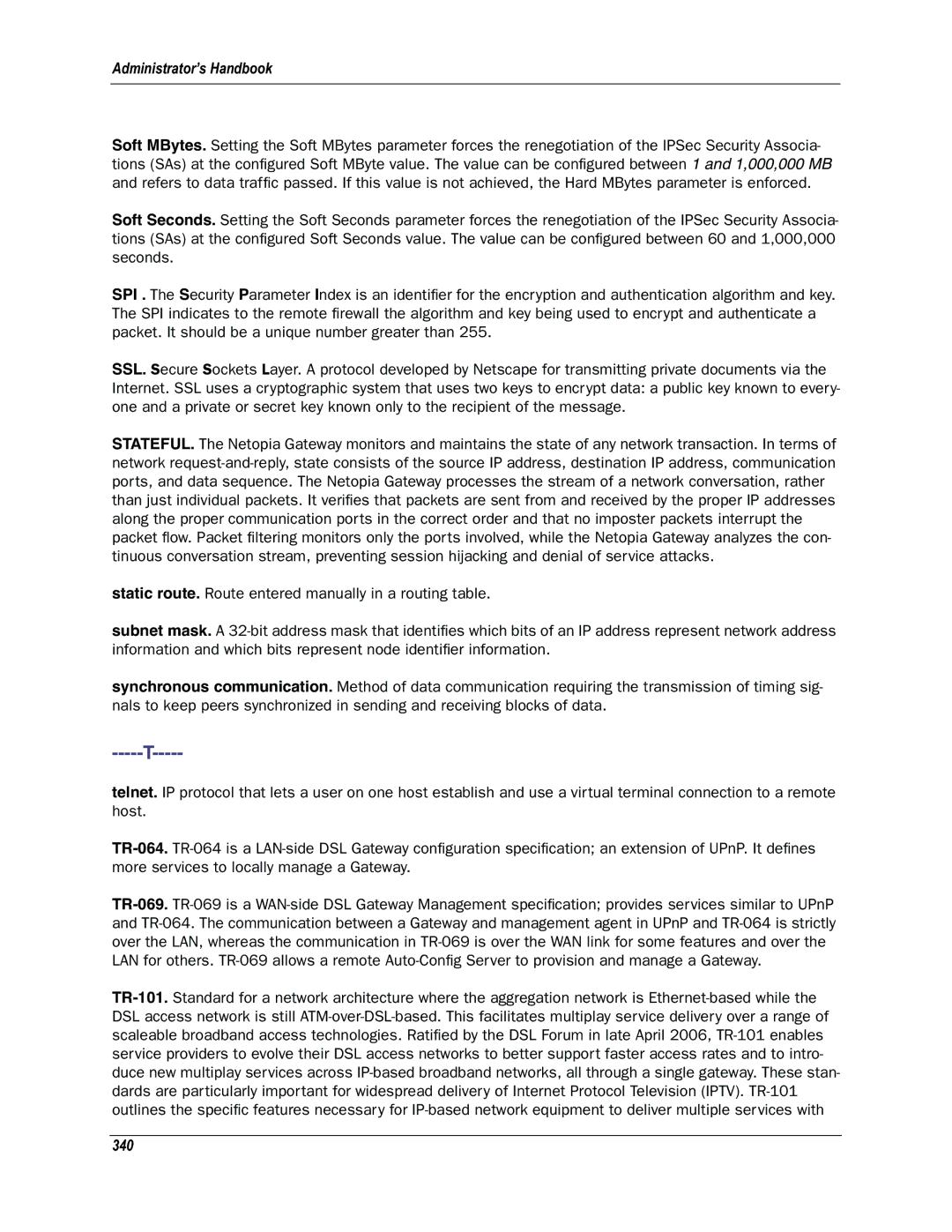
Administrator’s Handbook
Soft MBytes. Setting the Soft MBytes parameter forces the renegotiation of the IPSec Security Associa- tions (SAs) at the configured Soft MByte value. The value can be configured between 1 and 1,000,000 MB and refers to data traffic passed. If this value is not achieved, the Hard MBytes parameter is enforced.
Soft Seconds. Setting the Soft Seconds parameter forces the renegotiation of the IPSec Security Associa- tions (SAs) at the configured Soft Seconds value. The value can be configured between 60 and 1,000,000 seconds.
SPI . The Security Parameter Index is an identifier for the encryption and authentication algorithm and key. The SPI indicates to the remote firewall the algorithm and key being used to encrypt and authenticate a packet. It should be a unique number greater than 255.
SSL. Secure Sockets Layer. A protocol developed by Netscape for transmitting private documents via the Internet. SSL uses a cryptographic system that uses two keys to encrypt data: a public key known to every- one and a private or secret key known only to the recipient of the message.
STATEFUL. The Netopia Gateway monitors and maintains the state of any network transaction. In terms of network
static route. Route entered manually in a routing table.
subnet mask. A
synchronous communication. Method of data communication requiring the transmission of timing sig- nals to keep peers synchronized in sending and receiving blocks of data.
telnet. IP protocol that lets a user on one host establish and use a virtual terminal connection to a remote host.
